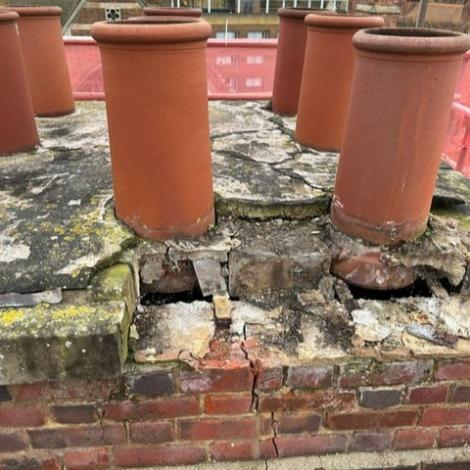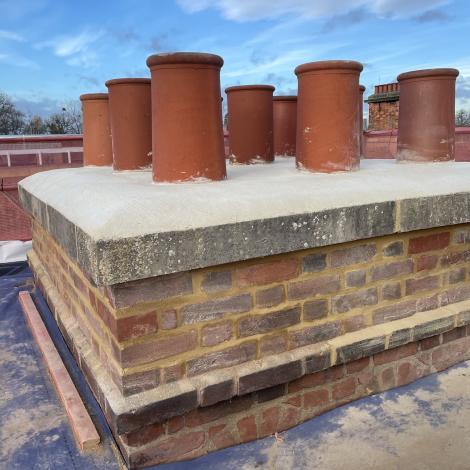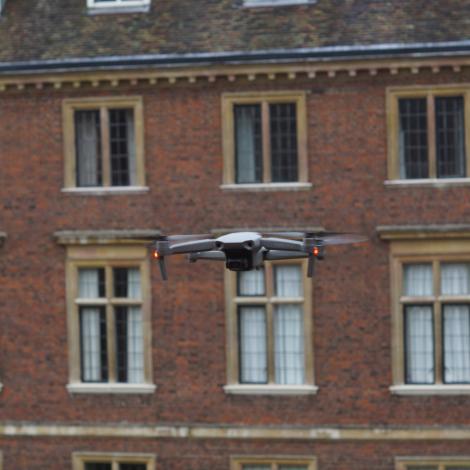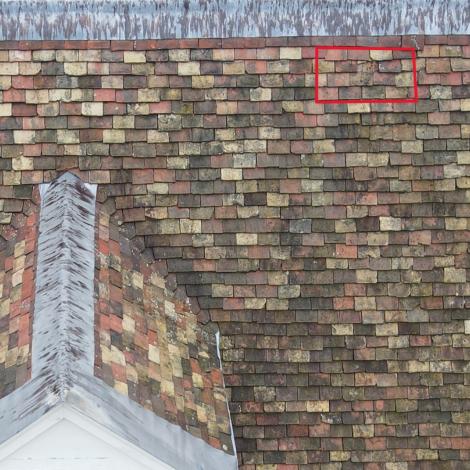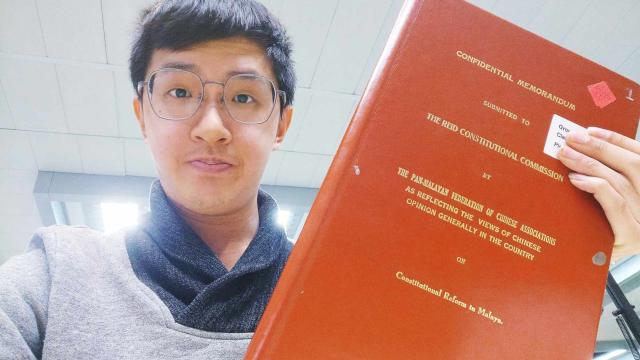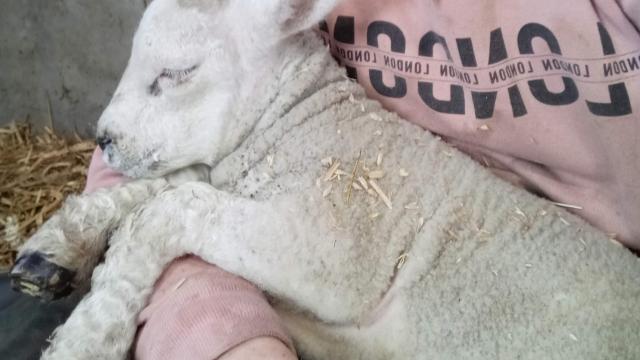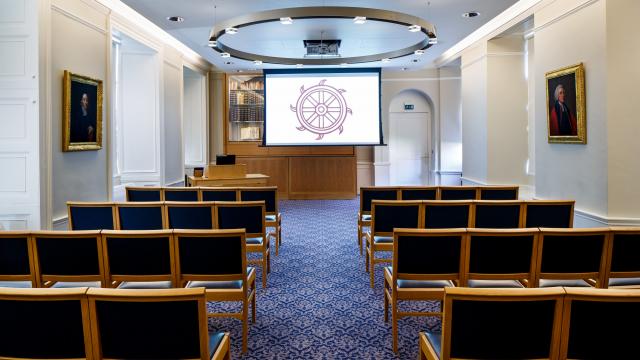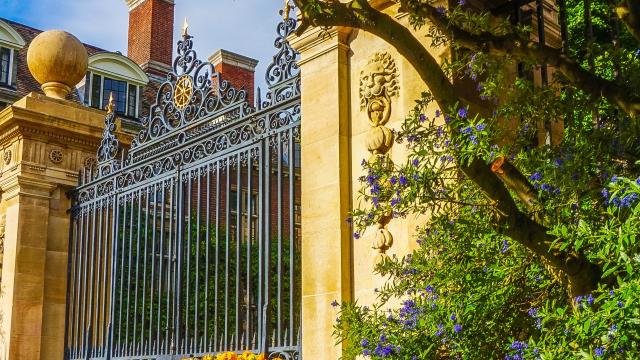
St Catharine’s takes pride in serving as the guardian of our historical buildings and seeks to preserve these for future generations. Over several years, the College’s investment in our buildings and spaces has been clear from the busy construction sites operating during the Central Spaces project, Sherlock Court renovations and new student accommodation at St Chad’s – all major projects completed in 2022–23.
Sir John Benger (1979, English), Master at St Catharine’s, commented:
“We at St Catharine’s are fortunate to be the custodians of many wonderful buildings: from Grade I and II listed buildings of architectural importance, to modern facilities that have been recently built or refurbished across our estate. Preserving our buildings as a home for our thriving community and for the enjoyment of future generations who live and study here will continue to be a strategic priority for years to come.”
Preserving our oldest buildings, however, takes a great deal of care and investment year after year. A great example is proactive way our Buildings & Maintenance team is approaching how to preserve the roofs across our estate, including the Grade I-listed pitched roofs in Main Court that were originally constructed between 1674 and 1761. Read on to find out about some of their activities.
The benefits of planned maintenance
The Buildings & Maintenance Department at St Catharine’s includes 12 team members, who are responsible for looking after our estate, including our roofs. By implementing a schedule of proactive maintenance throughout the year, the team can catch problems earlier and save the College from added disruption and costs further down the line.
Mel Kydd, Head of Buildings & Maintenance at St Catharine’s, explained:
“With roughly 10,000 m2 of roofs across our properties, we can’t afford not to be proactive. Our busy maintenance schedule includes a range of one-off and recurring activities that preserve the condition of our roofs. Our team knows the College’s complex estate well and we’re constantly on the look-out for issues, which enables us to spot and contain problems – our planned works often identify additional remedial work, which informs how we prioritise future activity.
“Roofs bring their own set of challenges so we have been investing time and resources so staff can work safely when assessing and putting right any problems. Our team regularly checks all rainwater goods (such as guttering and down pipes) for signs of disrepair, and we invested in a high-reach vacuum system that can clear blockages from ground level. We are also in the process of installing guard rails and edge protection across our flat roofs to provide easier and safer access.”
Case study: Rebuilding a vulnerable chimney
While completing planned works on another part of the roof, the Buildings & Maintenance team identified that the condition of the chimney on D staircase had severely deteriorated and needed urgent attention. Scaffolding was installed in Main Court in late 2023 to enable specialist contractors to secure the chimney – fortunately before a series of storms arrived in the UK this winter.
By February, the chimney had been completely rebuilt using methods and materials in-keeping with the building’s history (such as lime mortar) and the scaffolding could be removed.
Using modern technology to pre-empt problems
To enable a further shift from reactive to planned maintenance works, the Buildings & Maintenance team commissioned a drone survey of the College’s main site in December 2023, with particular attention paid to the roof above the buildings around Main Court. Unlike regular conditional surveys, the drone took detailed images from above to allow the team to assess the condition of our roofs and used thermal imaging to record heat loss. The results of the survey will be used to develop a planned schedule of works to preserve the roofs and boost insulation, and to help us programme more significant restoration works. To support of our ambition of net zero carbon emissions by 2040, all roof spaces will also be assessed to determine their suitability for the installation of heat pumps and solar panels.
Helen Hayward (2018), Fellow and Operations Director at St Catharine’s, explained:
“The Buildings & Maintenance team is responsible not only for repairing any damage to buildings at St Catharine’s, but also preventing damage in the first place. This was the first drone survey that we have ever commissioned, and it gave us visibility of our roofs that we would only ordinarily have by installing scaffolding. The survey results are an important step that takes us closer to protecting our historical buildings and to achieving net zero carbon emissions."
Case study: Missing tile identified by drone survey
The drone survey collected over 700 high resolution images of the roofs at St Catharine’s. Among these are close-up shots of visible defects that would benefit from the Buildings & Maintenance team’s attention: some requiring attention this academic year, and the majority for repair by the end of 2025.
An example of the first set of issues is provided below: an image showing a missing tile on one part of the roof, which would not be easily identifiable from ground level. This will be scheduled for repair by the team in the coming months.
Helen added, “Our Buildings & Maintenance team consists of skilled professionals, but they have to trust everyone at Catz to report problems when they arise. Much of our historical estate is occupied by students, staff and Fellows, so our community can be their eyes and ears, and tell them about any problems through our online reporting system. In a survey last year, 88% of students said their maintenance reports were dealt with in less than three days and 86% rated the quality of repairs as excellent or good, with comments praising the ‘brilliant’ and ‘friendly’ team for going ‘above and beyond’.
“There can be serious damage to the fabric of our buildings when problems with our roofs are left unreported so I’d encourage everyone to log their concerns, however small an issue might seem at first. It was great to see the Buildings and Maintenance team leading by example and reporting their concerns on the D-staircase chimney while working on a nearby roof.”

